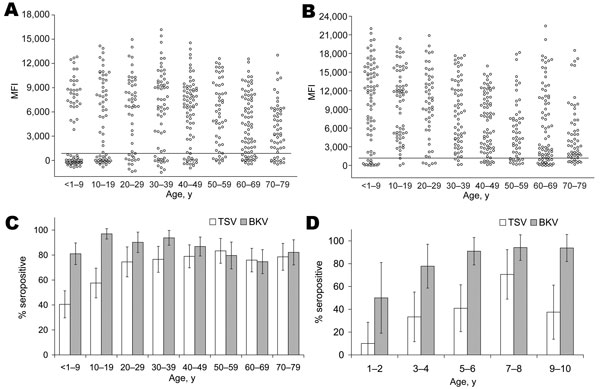Volume 17, Number 8—August 2011
Research
Seroprevalence of Trichodysplasia Spinulosa–associated Polyomavirus
Figure 7

Figure 7. Age-related seroprevalence of trichodysplasia spinulosa–associated polyomavirus (TSV) viral protein 1 (VP1) (A) and BKV polyomavirus VP1 (B) in a healthy population, the Netherlands. The population was divided into 8 age groups: <1–9 years of age (n = 79), 10–19 (n = 66), 20–29 (n = 51), 30–39 (n = 64), 40–49 (n = 76), 50–59 (n = 54), 60–69 (n = 79), and 70–79 (n = 56). Each circle represents 1 serum sample, and the horizontal lines represent cutoff values. MFI, median fluorescent intensity. C) Seroprevalence of TSV VP1 (white bars) and BKV VP1 (gray bars), by age. D) Seroprevalence of TSV VP1 and BKV VP1 in youngest age group. Population was divided into 5 smaller age groups: 1–2 years of age (n = 10); 3–4 (n = 18); 5–6 (n = 22); 7–8 (n = 17); 9–10 (n = 16). Error bars indicate 95% confidence intervals.